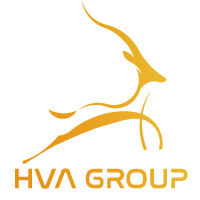You are Learn about public asset management? HVA will help you understand current legal regulations and how to use the software effectively. Refer to the details below!
Concept of public property
Public assets are assets owned by the entire people, managed and used by the State on behalf of the people. They play an important role in serving the common interests of the community, economic and social development. Public asset management is the operation, control and exploitation of assets owned by the entire people, represented by the State.
Key features of public asset management software
Public asset management software considered a tool Asset Management effective, a software application designed to help agencies and organizations manage and control public assets. This software helps automate processes, increase transparency, reduce errors and losses, and provide detailed reports to support more effective decision making. Key features of public asset management software you need to know:
- Asset portfolio management: This software will create and manage a database of public assets such as land, infrastructure, equipment, vehicles, etc. and then it stores detailed information about each asset such as code, name, location, purchase time, value, etc.
- Asset condition tracking: Public assets are tracked and managed for usage, along with maintenance and repair management.
- Manage invest and purchasing: Planning investments, purchasing assets and besides this tool helps control the costs related to investments, purchasing assets.
- Reports and statistics: Initially, this software helps create reports and statistics on asset management status and then evaluate the efficiency of use and depreciation of assets.
- Finally, Control and Decentralization: asset management processes and delegations are established and monitored, controlling activities related to public assets.
Using public asset management software will help agencies and organizations manage assets more effectively, transparently and in compliance with legal regulations. This will contribute to improving the efficiency of using and protecting public assets.

Regulations on public asset management
Regulations on public asset management is a legal document regulating the management, use and liquidation of public assets. The main contents of the public asset management regulations usually include:
- Scope and subjects of application: Determine the scope of regulation and types of public assets managed. Then determine the organizations and individuals involved in public asset management.
- The principles and requirements of public asset management are to ensure the requirements of publicity, transparency, efficiency and economy. The requirements of public asset management are the management, use, preservation and maintenance of public assets.
- Responsibility and decentralization of public asset management: Is the process of assigning responsibility for asset management among levels and agencies. Regulations on the assignment, recovery, and transfer of public assets.
- Investment management, public asset procurement: Regulations on planning, appraisal, approval of investment and procurement. Then carry out the bidding process and procedures, and select contractors.
- Management, use and preservation of public assets: These are state regulations on the assignment, management and use of assets. Accompanying the process of preservation, maintenance and repair of public assets.
- Recovering and liquidating public assets: Regulations on recovering assets no longer needed. Procedures and order for liquidating and handling public assets.

Regulations on management and use of public assets you need to know
Regulations on management and use of public assets is a set of regulations, principles, and procedures to help agencies, organizations, units, and individuals use public assets more effectively, economically, transparently, and especially in compliance with the provisions of law.
The regulations on management and use of public assets serve as a legal basis to help agencies and organizations clearly understand the rights and obligations of the parties involved. This regulation is considered the most specific guide for the use of assets.
In addition, it will ensure consistency and transparency, thereby ensuring that all activities related to public assets are consistent and avoid arbitrariness, preventing negativity and corruption. Finally, thanks to the regulations on management and use of public assets, it helps to improve management efficiency, specifically optimize assets, shorten procedures and provide complete and accurate information to support the decision-making process.
Learn about public asset management and the goals of management
Management of public asset use is an important activity to ensure that assets are managed and used effectively, for the right purpose, and to avoid waste. The process requires the participation of the whole society, specifically our responsibility in contributing to the protection and effective exploitation of common assets.
The goal of public asset management that our state always aims for is uniformity, meaning that all activities related to the use of public assets must comply with a common set of rules. Then, improve efficiency by optimizing the use of assets and avoiding waste. Next, it is necessary to ensure transparency related to the activities of using public assets in preventing and handling violations of related laws.
The most basic goal of public asset management is to ensure that public assets are used to serve the needs of the community.
Steps in the public asset management process you need to know
Public asset management process What does it include? Let's find out more about this content below with HVA!
- Forming and supplementing assets: First, it is necessary to clearly identify the need for assets to serve the activities of the agency or unit. Then, it is necessary to make a plan for purchasing and investing in assets, including capital sources and implementation time. Next, proceed to purchase assets in accordance with the provisions of the law on bidding and selecting suppliers. Finally, the process of receiving assets from suppliers, checking quality, quantity and making a handover record.
- Asset use: Assets are assigned to individuals and units for use according to management hierarchy. This is accompanied by a monitoring and supervision process to ensure that public assets are used appropriately and effectively. Public assets after handover need to be preserved and periodically maintained to extend their lifespan.
- Inventory and valuation: Conduct periodic asset inventories to determine the quantity, condition and value of assets. Assets are then valued to serve activities such as depreciation and asset liquidation.
- Asset liquidation: First, identify assets that have expired, are severely damaged, or are no longer needed. Then, carry out asset liquidation procedures according to the provisions of law.
- Record keeping: Store all records and documents related to assets, including sales contracts, handover minutes, accounting books, etc. Ensure record keeping to facilitate inspection and audit work.

Difficulties in public asset management
Public Asset Management is considered a complex problem and always faces many difficulties. Some difficulties in public asset management that organizations face such as:
- Lack of awareness and responsibility of many people, they do not really consider public assets as their own, leading to lack of responsibility to protect and use effectively. Another fundamental reason is lack of understanding of legal regulations related to public asset management leading to improper implementation of procedures.
- Incomplete management system: Some regulations are still general and unclear. In addition, the lack of a unified information system on public assets makes management by agencies and organizations difficult.
- The human factor is an important factor in management: Lack of staff with expertise in asset management. More seriously, some staff take advantage of their positions and powers to commit corruption, causing loss of assets.
- Pressure at work such as asset management officers often have to take on many different tasks, leading to a lack of focus on asset management. In addition, the pressure to complete targets and tasks sometimes causes officers to ignore regulations to achieve the set goals.
In addition, other objective factors must be mentioned such as changes in policies related to asset management, economic and social issues affecting the value and demand for public assets.
In short, the public asset management There needs to be close coordination between state agencies, organizations, businesses and the responsibility of each citizen. Therefore, through the above related contents, HVA Hope readers can better grasp the legal regulations on public asset management. From there, build a system public asset management effective, contributing to the sustainable development of the country.











